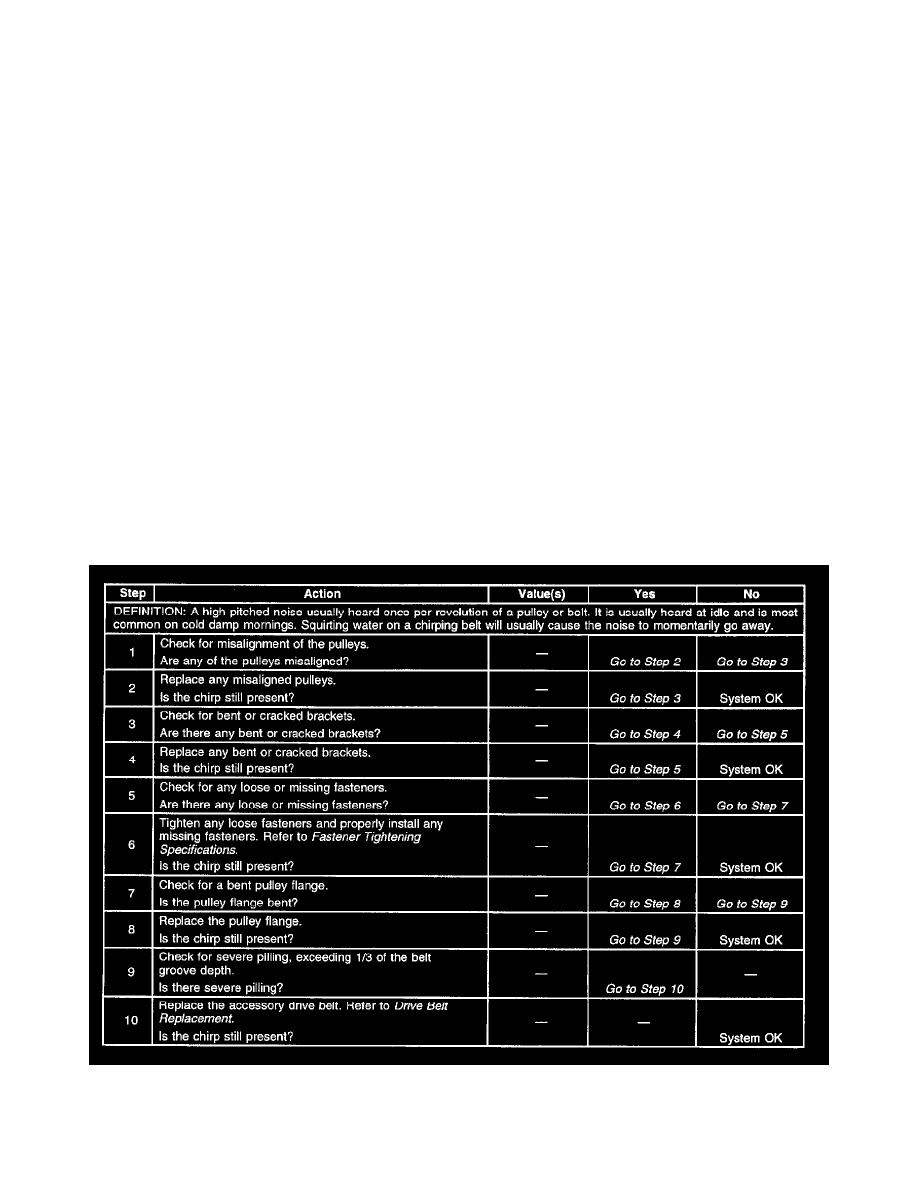Express 1/2 Ton Van V8-305 5.0L VIN M SFI (1998)

Drive Belt: Testing and Inspection
DEFINITIONS
The following are symptomatic noises of the drive belt system:
Chirping
The following items are indications of chirping:
^
A high pitched noise that is usually heard once per revolution of a pulley or a belt.
^
It is most common on cold, damp mornings.
^
Verify this condition by squirting water onto the belt. The noise will momentarily stop,
Squeal
The following items are indications of squeal:
^
A loud screeching noise that is caused by a slipping belt (this is unusual for a belt with multiple ribs).
^
The noise occurs when a heavy load is applied to the belt, such as an air conditioning compressor engagement, snapping the throttle, or slipping on
a seized pulley.
Whine
A high pitched continuous noise that may be caused by a failed bearing.
Faint Cycle Rumbling
A low frequency noise heard once per revolution of the drive belt.
Pilling
The following items are indications of pilling:
^
The random accumulation of rubber dust in the bottom of the multi-ribbed belt grooves.
^
A small amount of pilling is normal.
^
Operation of the drive belt system will not be effected unless the buildup exceeds one third (1/3) of the belt groove depth.
Multiple-ribbed type drive belts wear evenly with their pulleys. Unusual wear indicates a correction is needed. The following diagnostic tables will aid
in diagnosing drive belt system conditions.
